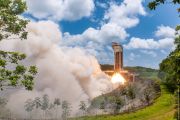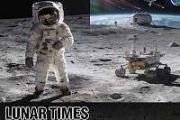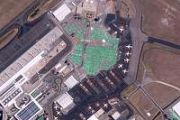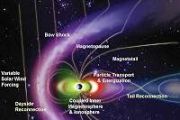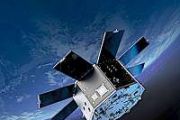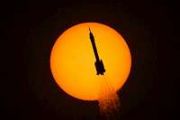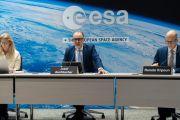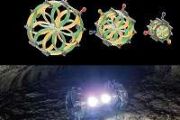
Copernical Team
How chaotic planet formation may explain wide-orbit worlds like Planet Nine
 In the remote edges of planetary systems, far beyond the range of traditional planet-forming regions, astronomers have long grappled with the mystery of wide-orbit planets. These gas giants and planetary-mass bodies orbit hundreds to thousands of astronomical units (AU) from their stars, raising fundamental questions about their origins. A new study led by Rice University and the Planetary Scien
In the remote edges of planetary systems, far beyond the range of traditional planet-forming regions, astronomers have long grappled with the mystery of wide-orbit planets. These gas giants and planetary-mass bodies orbit hundreds to thousands of astronomical units (AU) from their stars, raising fundamental questions about their origins. A new study led by Rice University and the Planetary Scien Politecnico di Milano to help chart Apophis asteroid during 2028 deep space mission
 Politecnico di Milano is gearing up for a return to deep space as part of the European Space Agency's 2028 RAMSES mission, which will study the near-Earth asteroid Apophis during its exceptionally close approach on 13 April 2029.
Apophis, a 350-meter-wide asteroid, will pass within 31,000 kilometers of Earth-closer than many satellites in geostationary orbit. ESA has selected Politecnico's
Politecnico di Milano is gearing up for a return to deep space as part of the European Space Agency's 2028 RAMSES mission, which will study the near-Earth asteroid Apophis during its exceptionally close approach on 13 April 2029.
Apophis, a 350-meter-wide asteroid, will pass within 31,000 kilometers of Earth-closer than many satellites in geostationary orbit. ESA has selected Politecnico's Czech Republic eyes astronaut mission through Axiom Space collaboration
 The Czech Republic has taken a significant step toward launching a national astronaut into space by submitting a Letter of Intent (LOI) to Axiom Space. Signed by Minister of Transport Martin Kupka, the LOI signals the country's commitment to participating in a future human spaceflight mission with the commercial spaceflight company.
The move builds upon an earlier Memorandum of Understandi
The Czech Republic has taken a significant step toward launching a national astronaut into space by submitting a Letter of Intent (LOI) to Axiom Space. Signed by Minister of Transport Martin Kupka, the LOI signals the country's commitment to participating in a future human spaceflight mission with the commercial spaceflight company.
The move builds upon an earlier Memorandum of Understandi Estrack - Half a century of European satellite tracking
2025 marks a landmark year for Europe’s ‘bridge between Earth and space’. The European Space Agency’s Estrack satellite tracking network turns 50.
Since its inception in 1975, Estrack – ESA’s global network of ground stations – has formed the vital communication bridge between satellites in orbit and mission control at the European Space Operations Centre (ESOC) in Darmstadt, Germany.
Now comprising six stations spanning six countries, Estrack has grown into a strategic asset for Europe, enabling communication with spacecraft, transmitting commands and receiving scientific data.
The network keeps an eye on satellites no matter their location:
Starship megarocket blows up over Indian Ocean in latest bumpy test
This request seems a bit unusual, so we need to confirm that you're human. Please press and hold the button until it turns completely green. Thank you for your cooperation!
Press and hold the button
If you believe this is an error, please contact our support team.
185.132.36.159 : f59cb791-21a1-4cd9-ac0a-b42691ab
How to capture Moon landing videos – from grainy to HD

The next time astronauts land on the Moon, we will watch it in high-definition. The transmission will be in colour, digital and at up to 60 frames per second.
After brief X outage, Musk says refocusing on businesses
 Social media platform X was hit by a two-hour outage Saturday, prompting owner Elon Musk to say he needs to spend more time focusing on his companies.
His statement echoed comments earlier this month suggesting he would reduce his role in US President Donald Trump's administration.
The world's richest person has an extraordinarily full plate as owner/CEO of X, xAI (developer of the AI-po
Social media platform X was hit by a two-hour outage Saturday, prompting owner Elon Musk to say he needs to spend more time focusing on his companies.
His statement echoed comments earlier this month suggesting he would reduce his role in US President Donald Trump's administration.
The world's richest person has an extraordinarily full plate as owner/CEO of X, xAI (developer of the AI-po Starship tumbles back to Ocean after reaching a nominal orbit
 SpaceX's prototype Starship exploded over the Indian Ocean on Tuesday, capping another bumpy test flight for the rocket central to billionaire Elon Musk's dream of colonizing Mars.
The biggest and most powerful launch vehicle ever built lifted off around 6:36 pm (2336 GMT) from the company's Starbase facility, near a southern Texas village that earlier this month voted to become a city - al
SpaceX's prototype Starship exploded over the Indian Ocean on Tuesday, capping another bumpy test flight for the rocket central to billionaire Elon Musk's dream of colonizing Mars.
The biggest and most powerful launch vehicle ever built lifted off around 6:36 pm (2336 GMT) from the company's Starbase facility, near a southern Texas village that earlier this month voted to become a city - al Aiming for less explosive end, SpaceX targets Starship launch this evening
This request seems a bit unusual, so we need to confirm that you're human. Please press and hold the button until it turns completely green. Thank you for your cooperation!
Press and hold the button
If you believe this is an error, please contact our support team.
185.132.36.159 : 08ebd848-7c90-4610-91ba-820226b0
Inauguration of the European Space Deep-Tech Innovation Centre (ESDI) – first ESA presence in Switzerland

The European Space Agency (ESA) has inaugurated the European Space Deep-Tech Innovation Centre (ESDI), the first ESA presence in Switzerland, created in close collaboration with the Paul Scherrer Institute (PSI). The new centre is located at the Switzerland Innovation Park Innovaare in Villigen. The opening highlights the growing role of deep tech in space exploration and its potential to boost Europe's growth and competitiveness.








